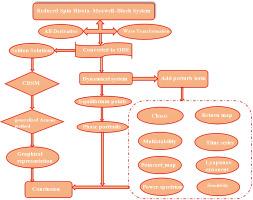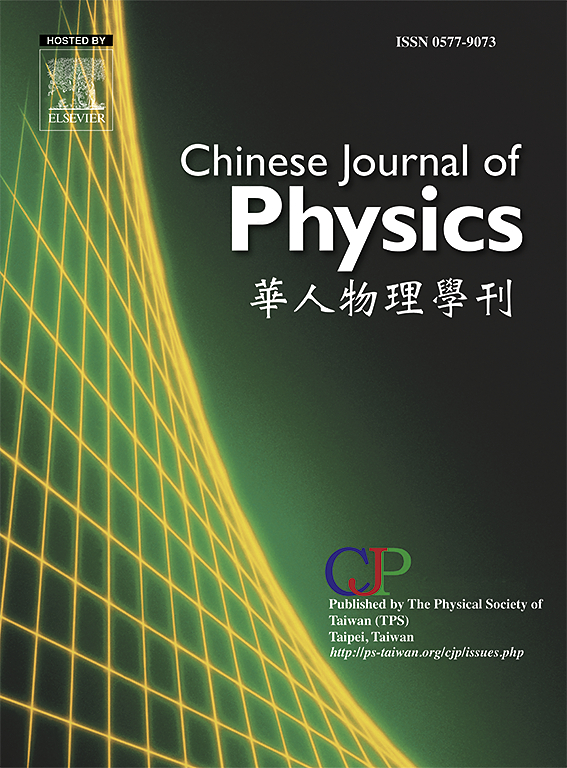Exploring nonlinear dynamics and soliton structures in the spin reduced Hirota-Maxwell-Bloch system via Atangana’s conformable operator
IF 4.6
2区 物理与天体物理
Q1 PHYSICS, MULTIDISCIPLINARY
引用次数: 0
Abstract
In this work, we analyze the integrable reduced spin Hirota-Maxwell-Bloch (rsHMB) equation, which is an essential model for femtosecond pulse propagation in vector-soliton interactions, magnetization-reversal phenomena, and erbium-doped fibers, along with Atangana’s conformable derivative, thereby incorporating memory effects into the spin-field coupling. Two analytic techniques are used to construct exact, closed-form solutions: (i) the complete discriminant system method (CDSM) of polynomials, which produces dark, bright, and mixed soliton families together with periodic wave packets, and (ii) a generalized Arnous method that yields novel multi-peak and W-shaped solitary patterns. A subsequent bifurcation analysis reveals a rich hierarchy of dynamical regimes; specifically, elastic-medium stiffness and rippling amplitude emerge as the primary control parameters driving nonlinear free vibration. To chart the transition from order to chaos, we employ a comprehensive set of nonlinear-dynamics diagnostics. Time-series traces, phase portraits, multistability tests, Poincaré sections, and strange-attractor reconstructions expose multiple coexisting attractors and sensitive dependence on distinct initial conditions. Quantitatively, a Lyapunov-exponent spectrum verifies the existence of at least one positive exponent, while power-spectrum densities and return maps exhibit broadband signatures consistent with deterministic chaos. A dedicated sensitivity analysis further demonstrates the butterfly effect, showing that infinitesimal perturbations precipitate markedly various long-term results. These results expand the solution space of the rsHMB system in the context of conformable fractional calculus, identify key mechanical parameters influencing its nonlinear oscillatory structure, and offer clear experimental indicators like bifurcation thresholds, chaotic bandwidths, and fractal attractor patterns for the control and detection of ultrafast spin-photon dynamics in magnetic media and optical fiber applications. The study thus provides both theoretical insight and practical guidelines for the development of high-speed, soliton-based spintronic and photonic devices.

利用Atangana适形算子探索自旋约化Hirota-Maxwell-Bloch系统的非线性动力学和孤子结构
在这项工作中,我们分析了可积约化自旋Hirota-Maxwell-Bloch (rsHMB)方程,它是矢量孤子相互作用、磁化反转现象和掺铒光纤中飞秒脉冲传播的基本模型,以及Atangana的共形导数,从而将记忆效应纳入自旋场耦合中。两种解析技术被用来构造精确的、封闭的解:(i)多项式的完全判别系统方法(CDSM),它产生暗的、亮的和混合的孤子族以及周期波包,以及(ii)一种广义的Arnous方法,它产生新的多峰和w形孤子图案。随后的分岔分析揭示了一个丰富的层次结构的动力制度;具体来说,弹性介质刚度和波纹幅值成为驱动非线性自由振动的主要控制参数。为了绘制从有序到混沌的过渡图,我们采用了一套全面的非线性动力学诊断方法。时间序列轨迹、相位肖像、多重稳定性测试、庞卡罗剖面和奇异吸引子重建揭示了多个共存的吸引子和对不同初始条件的敏感依赖。定量地,李雅普诺夫指数谱验证了至少一个正指数的存在,而功率谱密度和返回映射显示出与确定性混沌一致的宽带特征。专门的敏感性分析进一步证明了蝴蝶效应,表明无穷小的扰动显著地沉淀了各种长期结果。这些结果拓展了rsHMB系统在适形分数阶微积分背景下的解空间,确定了影响其非线性振荡结构的关键力学参数,并为磁介质和光纤中超快自旋光子动力学的控制和检测提供了明确的实验指标,如分岔阈值、混沌带宽和分形吸引子模式。因此,该研究为高速、基于孤子的自旋电子和光子器件的发展提供了理论见解和实践指导。
本文章由计算机程序翻译,如有差异,请以英文原文为准。
求助全文
约1分钟内获得全文
求助全文
来源期刊

Chinese Journal of Physics
物理-物理:综合
CiteScore
8.50
自引率
10.00%
发文量
361
审稿时长
44 days
期刊介绍:
The Chinese Journal of Physics publishes important advances in various branches in physics, including statistical and biophysical physics, condensed matter physics, atomic/molecular physics, optics, particle physics and nuclear physics.
The editors welcome manuscripts on:
-General Physics: Statistical and Quantum Mechanics, etc.-
Gravitation and Astrophysics-
Elementary Particles and Fields-
Nuclear Physics-
Atomic, Molecular, and Optical Physics-
Quantum Information and Quantum Computation-
Fluid Dynamics, Nonlinear Dynamics, Chaos, and Complex Networks-
Plasma and Beam Physics-
Condensed Matter: Structure, etc.-
Condensed Matter: Electronic Properties, etc.-
Polymer, Soft Matter, Biological, and Interdisciplinary Physics.
CJP publishes regular research papers, feature articles and review papers.
 求助内容:
求助内容: 应助结果提醒方式:
应助结果提醒方式:


